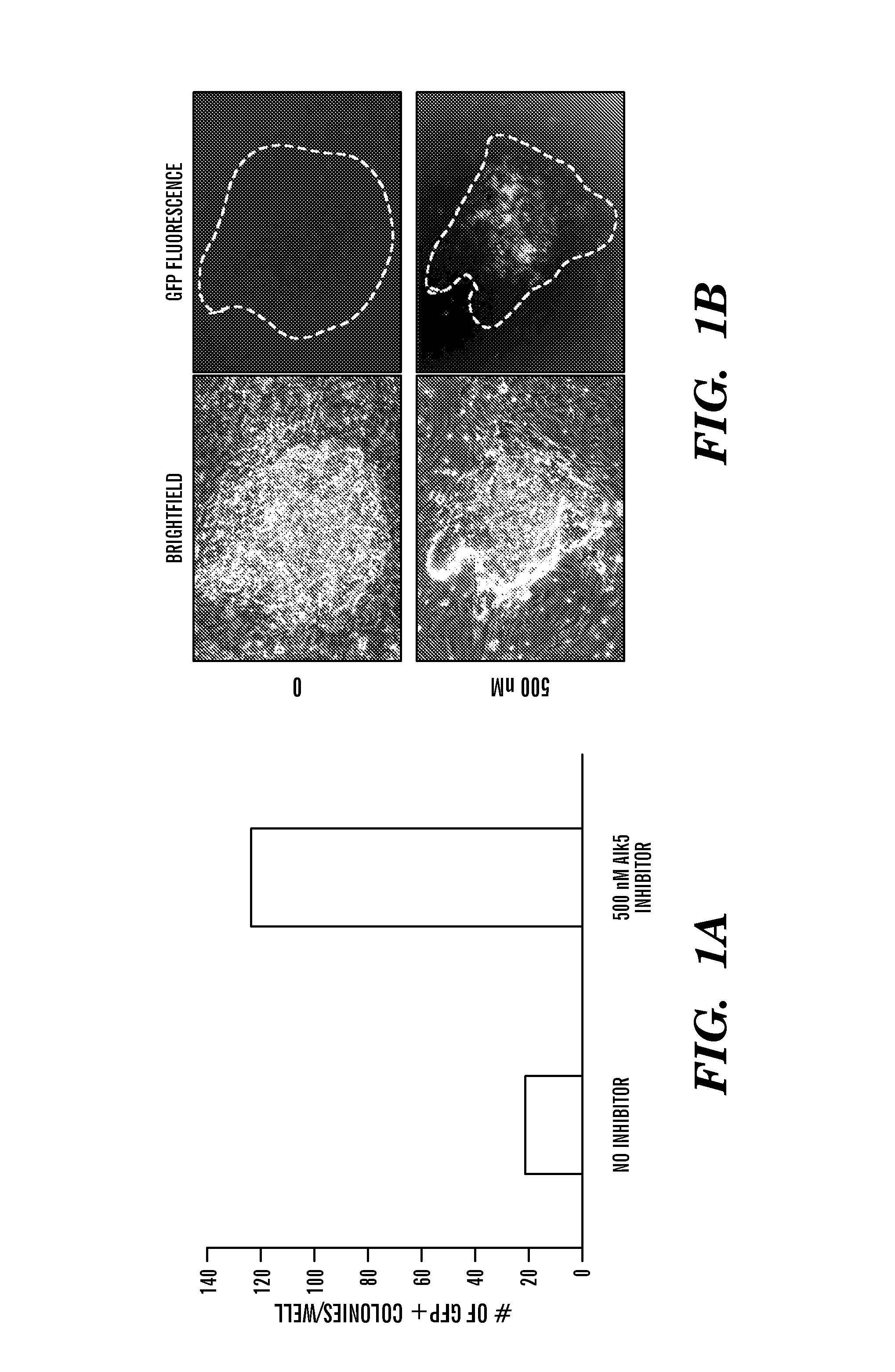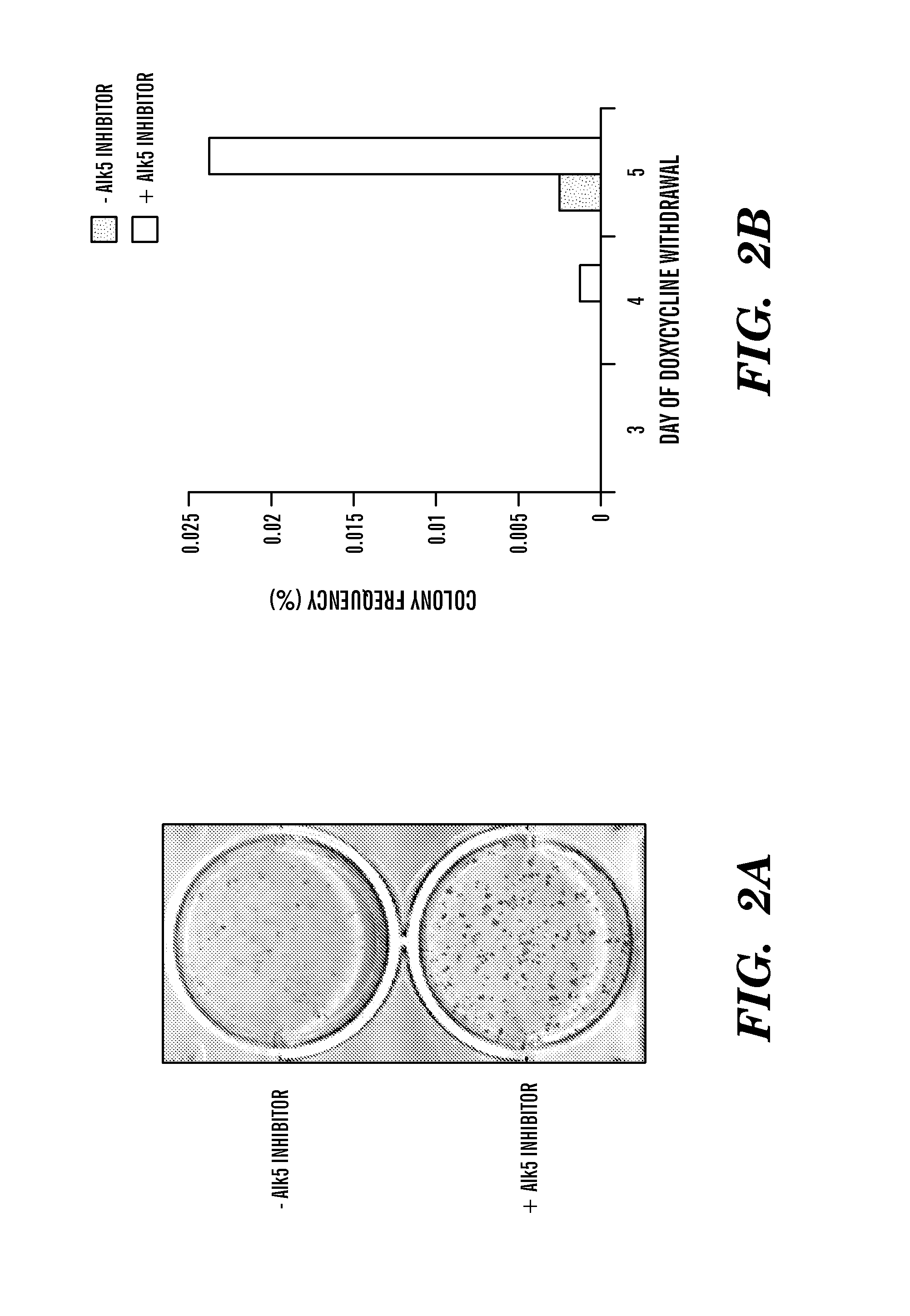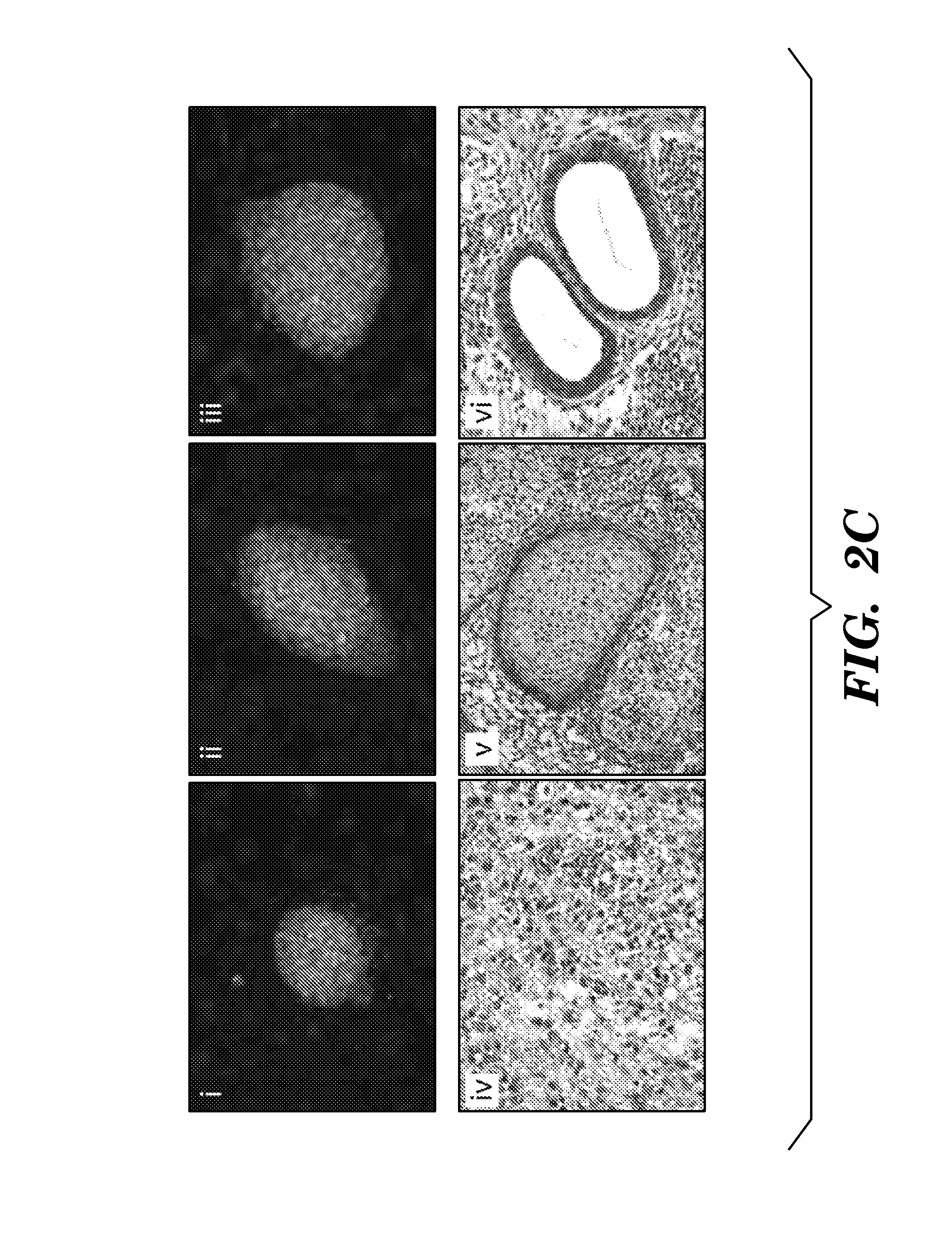TGF-beta receptor inhibitors to enhance direct reprogramming
- Summary
- Abstract
- Description
- Claims
- Application Information
AI Technical Summary
Benefits of technology
Problems solved by technology
Method used
Image
Examples
example 1
[0958]Fibroblasts cultures were established from mice expressing green-fluorescent protein (GFP) from the genomic locus of the pluripotency gene Sox2. Sox2-GFP fibroblasts were then infected with viruses expressing the reprogramming factors c-Myc, Klf4, Oct4 and Sox2 in the presence and absence of a chemical inhibitor highly specific for the TGF-beta receptor Alk5 (ALK5 inhibitor II). GFP+ colonies with embryonic stem (ES) cell morphology were scored 20 days after infection. In the presence of Alk5 inhibitor II, 5-10 fold more GFP+ colonies were observed, which after picking could be expanded like ES cells (see FIG. 1A). In addition, those colonies that formed in the presence of the Alk5 inhibitor started expressing GFP earlier than those that formed in the absence of the chemical, indicating that inhibiting Alk5 accelerates the activation of endogenous pluripotency genes (see FIG. 1B). These observations indicate that using chemicals to interfere with TGF-beta signaling is a way to...
example 2
[0959]To induce reprogramming, MEFs were infected with a reverse tetracycline transactivator (rtTA) transgene with doxycycline-inducible lentiviruses encoding the four reprogramming factors as previously described (Stadtfeld, M., et al., (2008) Cell Stem Cell 2, 230-240). Administration of the Alk5 inhibitor during the course of doxycycline (dox) induction elicited a striking increase in the number of iPSC colonies (FIG. 2A). These iPSC clones could be expanded in the absence of dox, which is a strong indicator of successful reprogramming (Stadtfeld, M., et al., (2008) Cell Stem Cell 2, 230-240; Maherali, N., et al., (2008) Cell Stem Cell 3, 340-345). This robust increase in efficiency prompted experiments examining whether the Alk5 inhibitor could also reduce the temporal requirement of factor expression, thus reflecting an increase in the kinetics of reprogramming. To test this, doxycycline was applied for three, four, or five days on four-factor infected MEFs, either in the prese...
example 3
Exemplary Methods Useful for the Methods Described Herein
Virus Production
[0976]Vectors were constructed as previously described (Stadtfeld, M., et al., (2008) Cell Stem Cell 2, 230-240). For all experiments, cells were infected overnight at an MOI of 10 in the presence of polybrene 6 μg / mL, which was experimentally determined to infect >90% of cells.
Cell Culture and iPSC Induction
[0977]Cells were obtained from mice harboring a reverse tetracycline transactivator (rtTA) in the Rosa locus (Hochedlinger, K., et al. (2005) Cell 121, 465-477). Fibroblasts were derived from E14.5 mice; all experiments were conducted prior to passage 3. To induce reprogramming, cells were infected with the viral cocktail, then split two days later into ESC media (15% FBS, Invitrogen; 1000 U / mL LIF) with doxycycline (1 μg / mL). Fibroblast feeder cells were used only to maintain iPSC lines, not during reprogramming. The Alk5 inhibitor (Calbiochem / EMD 616452) was used at a concentration of 1 μM, unless otherwi...
PUM
 Login to View More
Login to View More Abstract
Description
Claims
Application Information
 Login to View More
Login to View More - R&D
- Intellectual Property
- Life Sciences
- Materials
- Tech Scout
- Unparalleled Data Quality
- Higher Quality Content
- 60% Fewer Hallucinations
Browse by: Latest US Patents, China's latest patents, Technical Efficacy Thesaurus, Application Domain, Technology Topic, Popular Technical Reports.
© 2025 PatSnap. All rights reserved.Legal|Privacy policy|Modern Slavery Act Transparency Statement|Sitemap|About US| Contact US: help@patsnap.com



